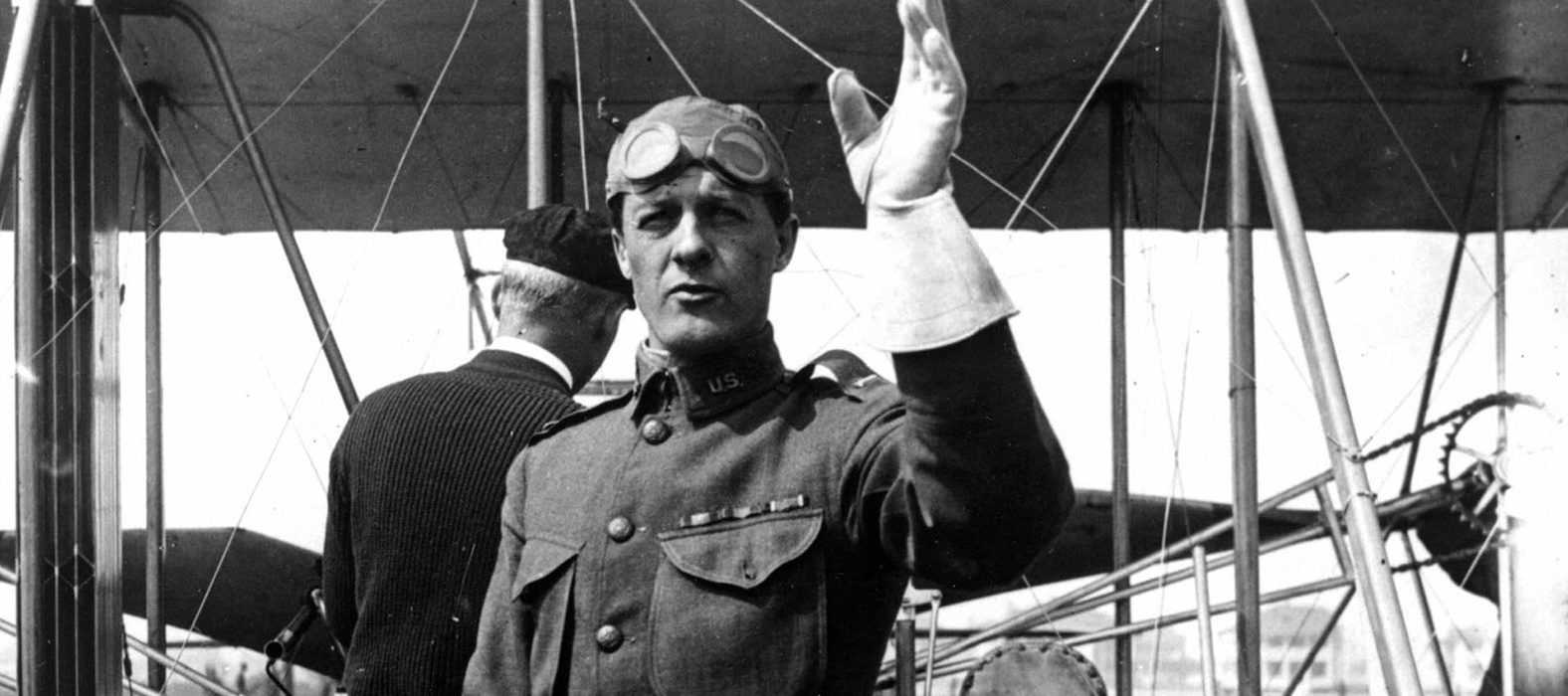An Aviator Even Before the Army Had Airplanes.
Benny Foulois was a pioneer of American aviation. He was one of the Army’s first pilots and the performer of numerous aerial feats involving altitude and distance records. Foulois would later become Chief of the Air Corps.
He enlisted in the Army and served in the Philippines during the Insurrection. He received a commission and in 1908 transferred to aviation. The following year the Army bought its first airplane, and Foulois was in on the ground floor. He later wrote that he learned to fly by correspondence. Stationed in Texas with one airplane, he would fly a sortie, something would break or go wrong, and he would write to the Wright Brothers in Ohio asking for guidance on how to continue. After one particularly bumpy flight, he invented the seat belt to prevent being thrown from the aircraft.
In 1916 he was commander of the 1st Aero Squadron and part of Brig. Gen. John J. Pershing’s “punitive expedition” to capture Mexican bandit Pancho Villa. The squadron’s performance was not impressive, as the rudimentary aircraft were frequently broken or lost. It was hardly an auspicious beginning for military aviation.
When the U.S. went to war, Foulois was sent to France as a brigadier general to head the nascent Air Service. Billy Mitchell was already in place. Sparks flew—and the two men quickly learned to despise each other. Foulois thought was Mitchell arrogant and undisciplined, and Mitchell termed Foulois a “carpetbagger” who had forgotten how to fly. Pershing, now commander of the American Expeditionary Force, appointed Maj. Gen. Mason Patrick to run the Air Service and force cooperation. Things smoothed out.
After the Armistice, Foulois returned to the States and reverted to his permanent rank of major. He worked briefly in Versailles, did a stint disposing of surplus material, and testified before Congress advocating the creation of a separate air force. Knowing this irritated his Army superiors, he volunteered to become the air attaché to Berlin. While there he gathered much information from German pilots and engineers that he sent back to Washington.
About the time Billy Mitchell was court-martialed and left the service, Foulois returned to Washington, got back his star, and became an assistant chief of the Air Corps. In 1931, he was promoted to major general and became Chief.
This was an important period. Aviation technology was exploding and new speed and altitude records were constantly being established. Wood and fabric construction gave way to metal, and engine horsepower tripled. Even so, the Air Corps lagged in purchasing new equipment: the land-dominated Army hierarchy was loath to spend much money on airplanes.
Foulois later spoke of this problem: his planners were frustrated; no matter how hard they pushed, the General Staff would not listen. Foulois told them to change the thrust of their proposals and stop using the word “offense;” rather, stress the word “defense” and how new, long-range aircraft could be used to defend American coasts or resupply the Hawaiian Islands. The ploy worked, and things improved. In late 1933 the Air Corps began fielding the Martin B-10 bomber—the first all-metal, cantilever-wing monoplane with retractable landing gear and enclosed cockpit. The B-10 was faster than most existing fighter planes.
In 1934 Foulois was confronted with a major operational challenge. The airlines had been flying the mail for over a decade, but due to contract irregularities, President Franklin D. Roosevelt abruptly canceled these contracts and ordered the Air Corps to fly the mail. With a can-do spirit, Foulois had responded positively when asked if he could do it. In truth, the service was hardly ready. With 10 days to prepare, the Air Corps quickly discovered that its aircraft were largely obsolescent, ill-equipped with proper instrumentation, and the pilots themselves were not trained adequately in either night or instrument flying conditions.
Things went poorly and crashes were frequent. The press and the President were outraged and demanded changes. Fortunately, the pilots became more experienced and the planes better equipped; moreover, spring arrived and the weather improved. Even so, it was not an impressive performance. The Air Corps had flown only a fraction of the routes, miles, and tonnage of airmail that the airlines had been flying for a decade. Worse, there were 66 crashes with 12 fatalities. Although those flying the mail later argued they had learned a great deal about themselves, flying, and weather phenomena, clearly the adventure had given the Air Corps and Foulois a black eye.
Soon after, Congress investigated Foulois for what were deemed faulty procurement practices. It did not go well, and the committee accused him of “gross misconduct” and “dishonesty.” The War Department did not come to his aid. Seeing how things stood, Foulois retired in 1935 “for the good of the service.”
DISCOVER MORE: Foulois wrote very interesting and entertaining memoirs long after retirement, From the Wright Brothers to the Astronauts (McGraw-Hill, 1968), and John F. Shiner wrote an excellent biography, Foulois and the U.S. Army Air Corps (Office of Air Force History, 1983).
